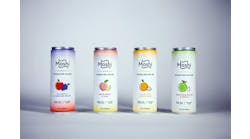A recession deeper than any since World War II is the ultimate test of the long-believed thesis that consumer packaged goods (CPG) companies weather economic downturns better than companies in other industries because they sell staples that consumers need in both good times and bad.
The 2009 Financial Performance Report
is available for download here.
The Grocery Manufacturers Assn., Washington, and New York-based PriceWaterhouseCoopers tested that thesis. Their 2009 Financial Performance Report found that many CPG companies did, in fact, perform well in 2008, albeit on a relative basis.
With shareholder returns down by “just” 20 percent, the food sector had the best performance among the three major CPG sectors: beverage, food, and household products. Sales grew by a robust 10 percent, evidence that consumers are increasingly cooking and eating at home, although with a preference for value-oriented products. Luckily, many CPG companies’ portfolios include a broad swath of brands, and in 2008 investors rewarded these companies for their product diversification.
Few would have guessed this success would come amidst 2008’s sobering economic facts. There was the biggest drop in consumer confidence since the Consumer Confidence Index was created; the disappearance of the investment bank as a business model; government bailouts of the financial services industry and bailouts and bankruptcies in the auto industry; double-digit declines in nationwide housing prices; and skyrocketing unemployment.
And there is one new fact about the American consumer that stands out: After years of mass consumption, consumers moved by the end of 2008 to save more than 4 percent of their disposable income, the highest rate since January 2004. Clearly, things have changed for American consumers and for CPG companies.
Food companies experienced flat to slightly lower median returns on invested capital, market capital and assets, and they registered significantly lower levels of free cash flow to sales than the other two major CPG sectors in 2008, as they have for the past five years. Reasons include the sector’s increasingly squeezed margins due to higher commodity prices, the consumer shift to lower-margin value products, high selling general and administrative (SG&A) expenses as a percentage of sales, necessary spending to develop new products and maintain market position and the increasing cost of debt.
Analysis revealed the top quartile of the Top Performing Companies (TPC) index was propelled by excellence in five areas: profitability, liquidity, continued spending on strategic SG&A expenses, sustained gross margins and managed debt capacity as represented by ability to cover interest payments.
“What differentiated the most successful companies was they reacted most effectively to the common themes and issues in 2008,” says Herb Walter, retired partner in PricewaterhouseCoopers’ Retail and Consumer Advisory Practice. “The issues were the economy, the value proposition where consumers expect more value for their dollar and a shift toward more value-oriented food products. Combine those with the trend of eating at home rather than out. Consumers looked for value and easier-to-cook, convenient options for their meals at home.”
Business performance in food manufacturing took on new meaning in this economy, Walter points out. “There was the cost-consciousness of production, cost of ingredients, cost of delivery and certainly the cost of transportation. They weren’t talking about bringing a good product to market; it was about the efficiencies and production costs to get product to market and the price volatility of ingredients.”
Walters thinks that will continue for many, many months to come. “It’s not just the beginning and end of the recession; it’s an evolution as we work on the challenges of the economic issues the country is facing,” he says. “The business side was a critical factor for the successful companies. They had the systems, processes and agility to respond and to deliver value and convenience. Behind the scenes, they had to execute on their business proposition.”
Along those lines is capital management. “Successful companies not only managed their production processes, they managed their balance sheet and capital well. [They] understood their debt load, timing of their debt offerings, managed their debt equity and working capital so they could manage their cash flow. Put those pieces together and it really differentiates successful CPG companies, and that is especially true in the food business.”
There certainly were many challenges. “Successful companies with iconic brands retrenched to focus on those brands, because those are the brands and products that, when worked properly from the marketing and messaging point of view, connect best with consumers,” explains Walter. “There was a lot less discussion this year about innovations and new products.” Rather, it was bringing products and messages responsive to consumer interests. “Those include sizing, eat-at-home demand, different ingredients in terms of convenience and flavoring with value formulations and value messaging,” he adds.
President Obama’s chief of staff, Rahm Emanuel, said in fall 2008, “You never want a serious crisis to go to waste.” This final quarter of 2009 represents a golden opportunity for food and beverage processors to emerge from this recession stronger than they went into it.


